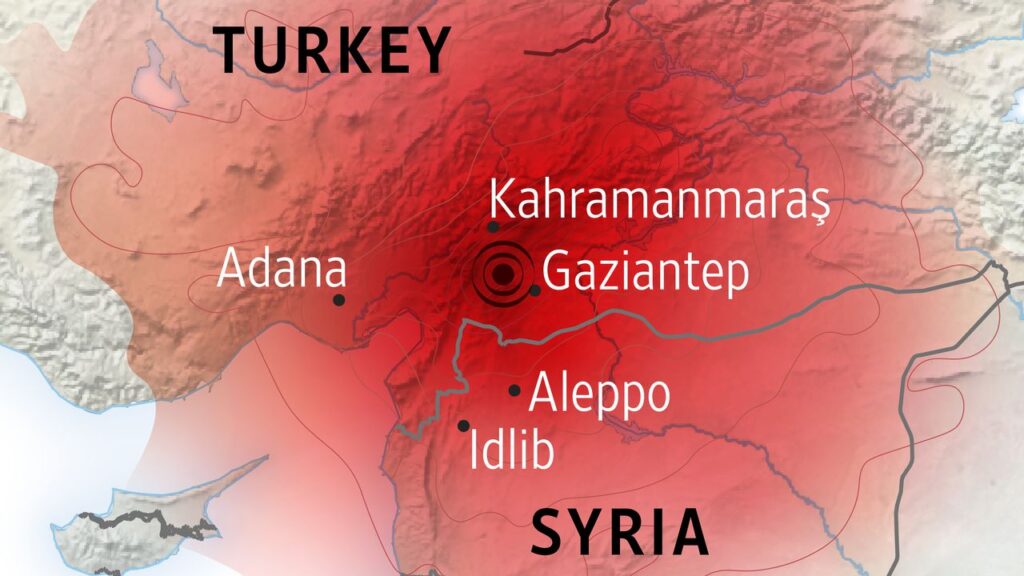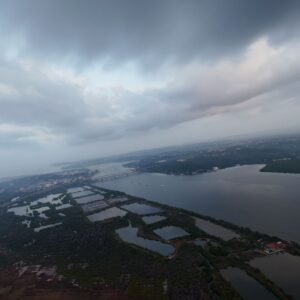How NASA is helping in rescue operations in earthquake-hit Turkey and Syria

Turkey-Syria earthquake: The US space agency’s administrator Bill Nelson said the teams of experts are working hard to provide valuable information from the Earth-observing fleet to the rescue workers. NASA is using its synthetic aperture radar (SAR) which can watch the earth in all weather conditions day and night.
This satellite image obtained, courtesy of Planet Labs, Inc. shows a SkySat image captured on February 7, showing the city of Kahramanmaras after a 7.8-magnitude earthquake struck southeastern Turkey earlier in the week. (AFP)Follow Us.
The US space agency’s administrator Bill Nelson said the teams of experts are working hard to provide valuable information from the Earth-observing fleet to the rescue workers. NASA is using its synthetic aperture radar (SAR) which can watch the earth in all weather conditions day and night. It is used to measure how the ground moves and built landscape changes after an earthquake, the agency posted on its website.
A team of scientists at the Earth Observatory of Singapore and NASA’s Jet Propulsion Laboratory collected images before and after the earthquake and created a ‘damage proxy map’ for Turkey.
These proxy maps compare before and after radar images of the earthquake to see how the landscape changed after the devastating tragedy. The agency’s Earth Science Applied Sciences, national and international collaborates make these proxy maps available to the US State Department, the California Seismic Safety Commission, the World Bank and the Miyamoto Global Disaster Relief.The NASA members not only provide observations and maps through the Disaster Mapping Portal, they are also involved in coordination calls by the US Agency for International Development.NASA’s disaster coordinator for Turkey-Syria earthquake Lori Schulz said the agency does not know who uses the information disseminated by the agency, but they have heard the World Central Kitchen has used the information to provide food to the people displaced. The NASA scientists are using space and ground-based observations to improve ability to decode the events arising from the natural disaster.
The scientists use data from the Commercial SmallSat Data Acquisition programme, which uses data from commercial satellites to help NASA with its research goals. They can spot areas which might be prone to heightened landslide risks.According to NASA, the scientists hope to add a new tool to assess aftermath of the quake. Launched to the International Space Station in 2022, the Earth Surface Mineral Dust Source Investigation (EMIT) can assess methane emissions as part of the observations of the composition of the Earth’s atmosphere.
Its observation times are dictated by the ISS orbit. However, while passing over the earthquake sites, the measurements of new emissions could point to events which are not otherwise easily spotted from the space.
NASA Disaster Program manager Shanna McClain said the agency’s relief efforts include tracking disasters such as natural hazard-triggered technological disasters such as damaged infrastructure and pipeline bursts which it wants to identify quickly to save the lives of people nearby. As per the website report, the EMIT’s ability to help with such efforts are under evaluation.








Thank you very much for sharing, I learned a lot from your article. Very cool. Thanks. nimabi
best antihistamine decongestant combo top rated pill for itching best allergy medication for itching
get insomnia medication online modafinil 100mg for sale
deltasone 20mg over the counter buy prednisone no prescription
acid reflux medications prescription list brand glycomet 1000mg
best pimple treatment for teens order deltasone 40mg online buy pills to treat acne
otc allergy medication comparison chart ketotifen 1mg sale generic allergy pills
accutane 20mg price accutane for sale buy isotretinoin 10mg
brand amoxil 500mg order amoxicillin 250mg online cheap generic amoxil 250mg
sleeping pills non prescription uk cheap meloset
buy zithromax oral zithromax 250mg azithromycin tablet
generic gabapentin 600mg neurontin for sale online
buy generic azithromycin 250mg azipro 500mg pill azithromycin pills
furosemide 100mg uk buy lasix generic diuretic
buy omnacortil 40mg pill prednisolone 20mg cheap generic prednisolone 40mg
order generic amoxicillin 500mg amoxicillin 250mg generic order generic amoxicillin 500mg
purchase monodox pill doxycycline 200mg for sale
strongest over the counter antihistamine albuterol for sale cheap albuterol inhalator
cheap augmentin 625mg clavulanate cheap
cost levoxyl cheap levoxyl pill levothroid drug
order levitra without prescription buy generic vardenafil online
buy tizanidine generic cost zanaflex order tizanidine 2mg pills
order generic serophene order clomid without prescription clomiphene pills
deltasone 20mg us deltasone 5mg ca oral deltasone
rybelsus cheap buy semaglutide without a prescription semaglutide 14 mg for sale
order isotretinoin 10mg online cheap order generic accutane 10mg buy isotretinoin 40mg generic
semaglutide pills rybelsus cost purchase semaglutide online
order amoxil 500mg sale buy amoxil 500mg online amoxicillin 250mg canada
buy albuterol generic albuterol price purchase albuterol sale
buy zithromax medication buy azithromycin 250mg online cheap generic azithromycin 500mg
clavulanate uk augmentin 625mg for sale augmentin 375mg pills
buy prednisolone 40mg generic prednisolone 10mg cost order prednisolone 5mg
cheap levothroid purchase levoxyl sale levothyroxine order
gabapentin 800mg pills buy generic gabapentin 100mg order neurontin 100mg generic
brand lasix 40mg buy furosemide diuretic how to get lasix without a prescription
vibra-tabs for sale acticlate cheap monodox cheap
buy semaglutide cheap semaglutide ca cheap semaglutide 14mg
world poker online real money blackjack free online blackjack no download
vardenafil order online vardenafil 10mg uk buy generic levitra for sale
lyrica cost buy pregabalin 150mg pills purchase pregabalin generic
order plaquenil 200mg sale buy generic hydroxychloroquine 200mg purchase hydroxychloroquine
buy triamcinolone 4mg online cheap aristocort 10mg pill cost aristocort 10mg
desloratadine 5mg oral clarinex over the counter buy desloratadine generic
where to buy cialis buy cialis 20mg generic cialis 40mg generic
loratadine 10mg ca oral loratadine 10mg loratadine 10mg tablet
buy cenforce 100mg online buy cenforce 50mg sale cenforce cost
buy chloroquine medication cost chloroquine 250mg chloroquine 250mg pill
dapoxetine cheap order priligy 30mg pills oral cytotec
metformin online glucophage 1000mg generic glycomet order online
purchase zovirax buy zyloprim no prescription zyloprim 100mg uk
atorvastatin 20mg price cost lipitor 40mg buy atorvastatin 40mg online cheap
oral amlodipine 5mg cost norvasc order amlodipine 10mg sale
rosuvastatin 10mg sale buy ezetimibe tablets buy zetia 10mg generic
buy generic zestril 10mg purchase prinivil online cheap zestril 2.5mg price
buy domperidone 10mg buy generic domperidone generic sumycin 250mg
treat reflux prilosec 10mg tablet order prilosec pills
buy flexeril sale lioresal cost baclofen without prescription
buy lopressor 100mg pill lopressor 100mg pills lopressor for sale
purchase toradol buy ketorolac cheap generic colcrys 0.5mg
buy tenormin pills for sale oral atenolol 100mg buy generic atenolol